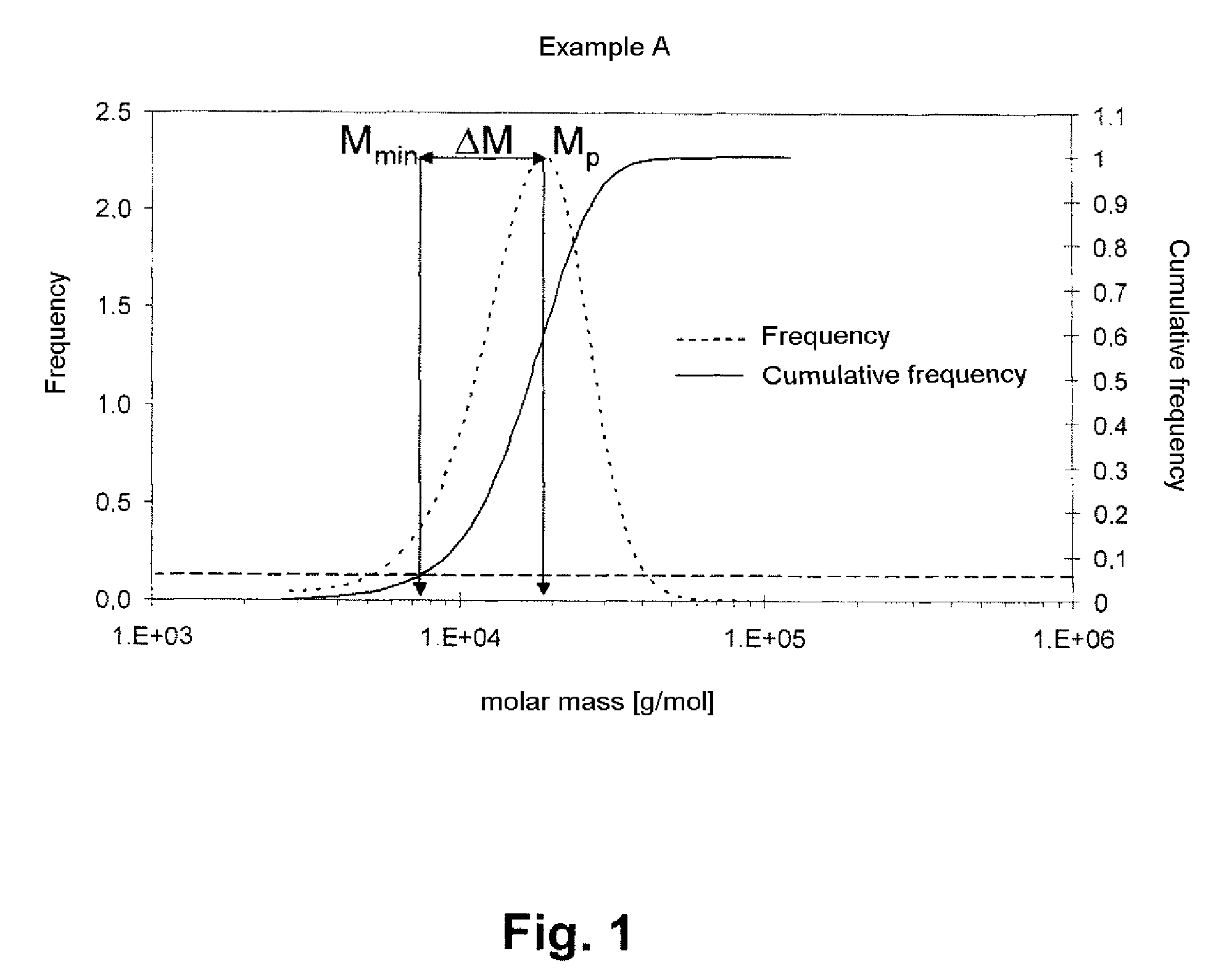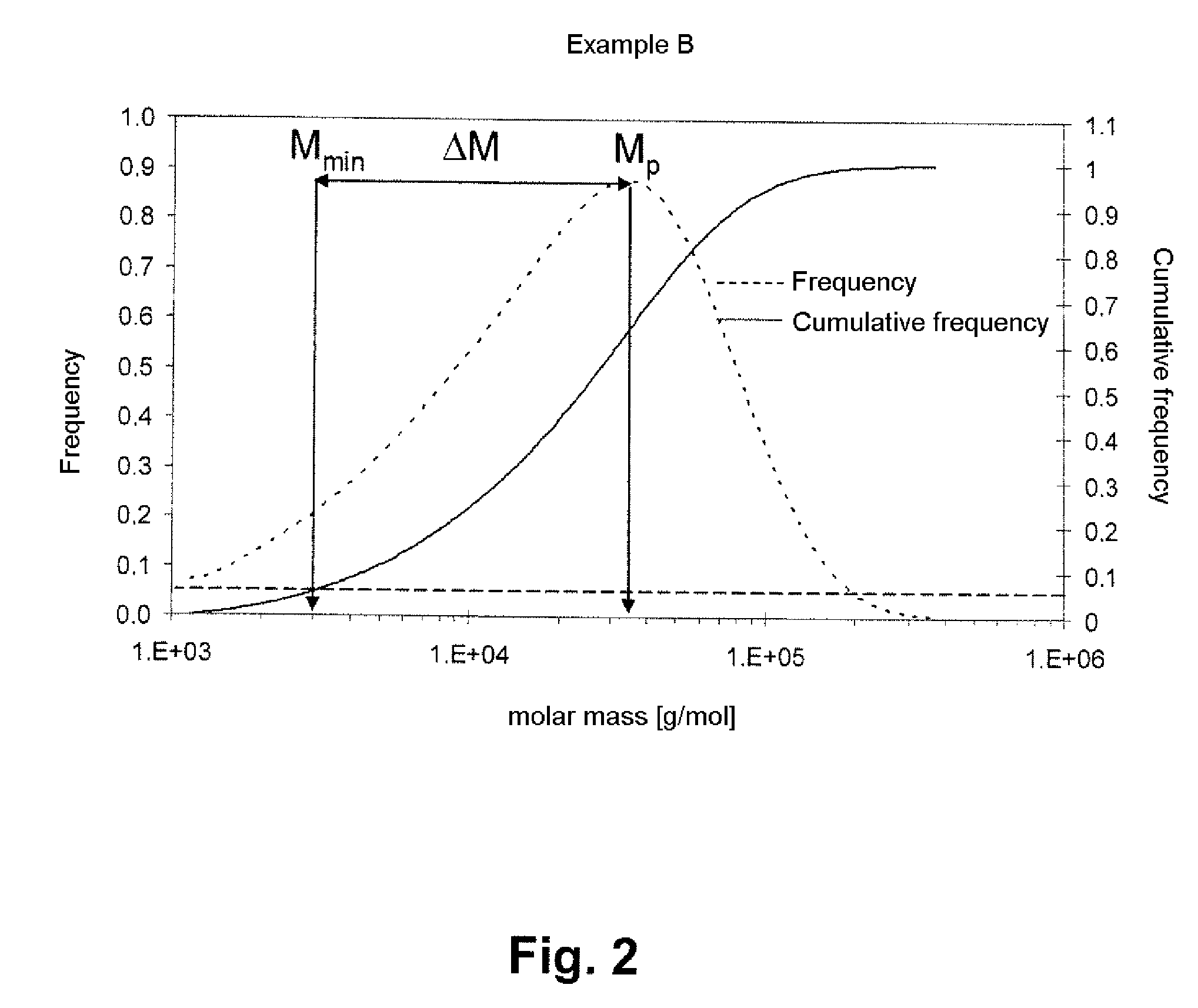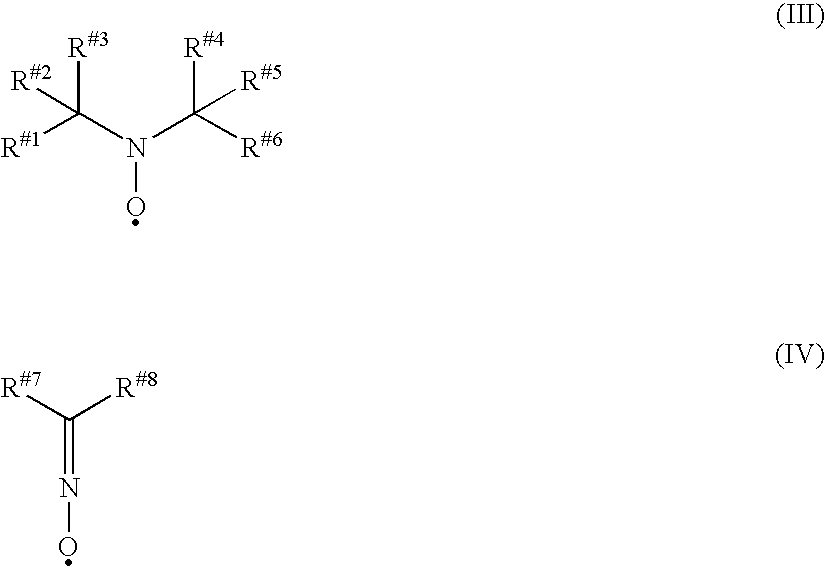Functionalized polymers or contact adhesive masses
a technology of functionalized polymers and adhesive masses, applied in the direction of adhesives, polyurea/polyurethane adhesives, adhesive types, etc., can solve the problems of chain not being integrated into the network that forms, high cost of such functionalized regulator molecules, and direct cost impact on the cost of functionalized polymers
- Summary
- Abstract
- Description
- Claims
- Application Information
AI Technical Summary
Benefits of technology
Problems solved by technology
Method used
Image
Examples
example a
[0103]A 2 l steel reactor conventional for free-radical polymerization was charged under a nitrogen atmosphere with 285 g of 2-ethylhexyl acrylate, 285 g of n-butyl acrylate, 30 g of 2-hydroxyethyl methacrylate, 400 g of acetone and 15.3 g of dibenzyl trithiocarbonate (prepared in accordance with instructions by W. M. Albert, Synth. Commun., 1988, 18, 1531 using benzyl bromide and carbon disulfide). The reactor was heated to an internal temperature of 58° C. and the monomer mixture was initiated with 0.1 g of Vazo 67® (DuPont). After 4 hours 40 minutes, initiation was repeated with 0.1 g of Vazo 67®. The temperature at this point was 67° C. After 24.5 hours the reactor was cooled and the polymer solution run off. The product was freed from solvent in a vacuum drying cabinet. GPC (test 1) indicated Mn=14 700 g / mol with a polydispersity of 1.23. The K value (test 2) was 17.6.
PUM
| Property | Measurement | Unit |
|---|---|---|
| weight average of the molar mass distribution | aaaaa | aaaaa |
| weight average of the molar mass distribution | aaaaa | aaaaa |
| weight average of the molar mass distribution | aaaaa | aaaaa |
Abstract
Description
Claims
Application Information
 Login to View More
Login to View More - R&D
- Intellectual Property
- Life Sciences
- Materials
- Tech Scout
- Unparalleled Data Quality
- Higher Quality Content
- 60% Fewer Hallucinations
Browse by: Latest US Patents, China's latest patents, Technical Efficacy Thesaurus, Application Domain, Technology Topic, Popular Technical Reports.
© 2025 PatSnap. All rights reserved.Legal|Privacy policy|Modern Slavery Act Transparency Statement|Sitemap|About US| Contact US: help@patsnap.com



